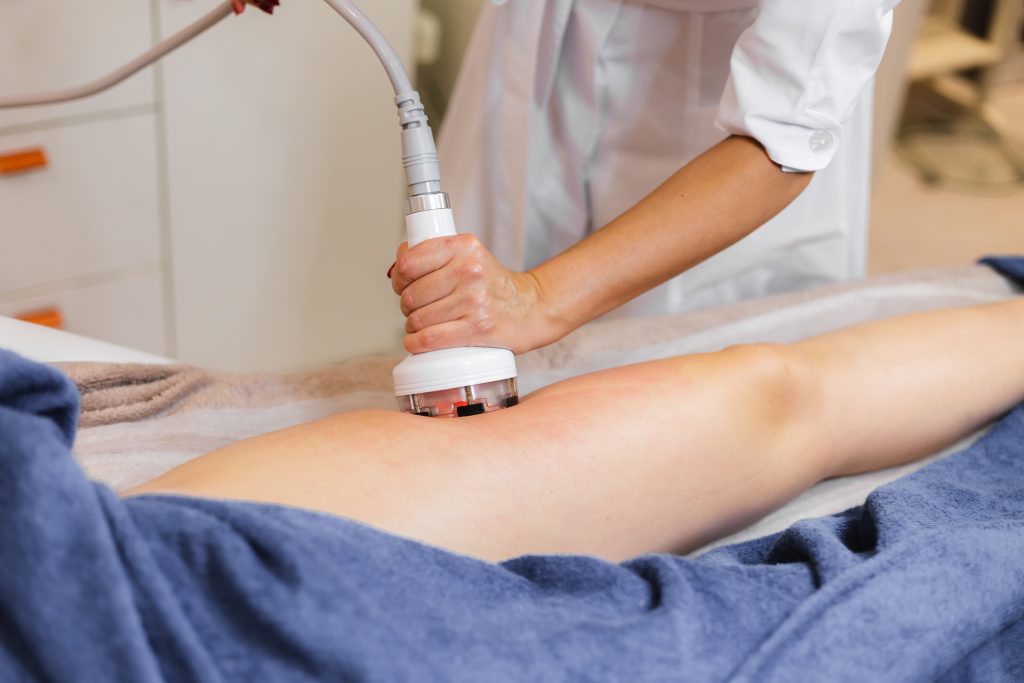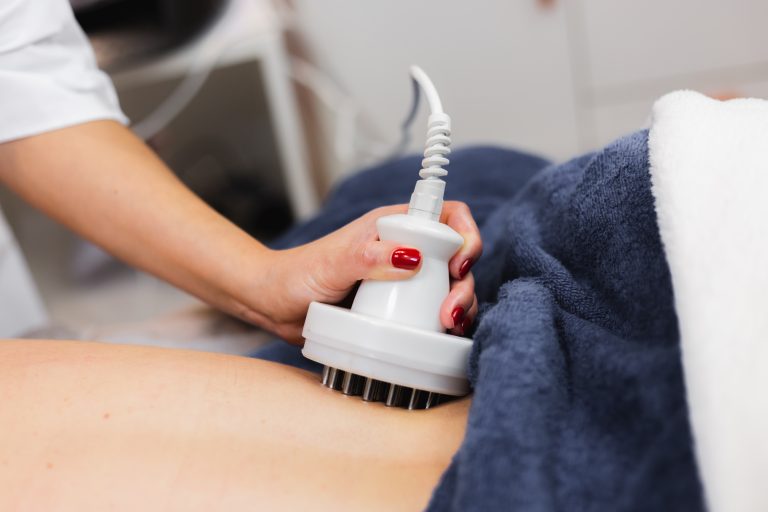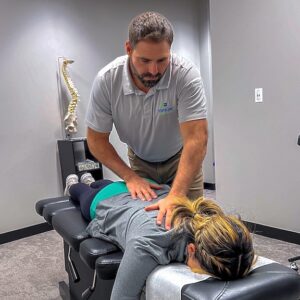When it comes to sports injuries, the road to recovery can often feel like an uphill battle. Traditional treatments have their merits, but have you ever considered riding the wave of innovation with soft wave therapy? In this blog, we will explore what soft wave therapy is, how it works, and when might be the right time to explore this cutting-edge approach. So, fasten your seatbelts, and let’s dive into the world of soft wave therapy.

Understanding Soft Wave Therapy:
Soft wave therapy, also known as acoustic wave therapy or shockwave therapy, is a non-invasive and revolutionary treatment that employs acoustic waves to stimulate the body’s natural healing processes. These waves are typically delivered through a device that applies pressure to targeted areas, promoting increased blood flow, tissue regeneration, and collagen production.
The beauty of soft wave therapy lies in its versatility. It’s not just limited to treating sports injuries; it has shown promise in addressing various musculoskeletal conditions, including tendonitis, plantar fasciitis, and even erectile dysfunction. Its non-surgical nature makes it an attractive option for those seeking alternative solutions to conventional treatments.
How Soft Wave Therapy Works:
Acoustic Wave Generation:
The journey into the realm of soft wave therapy begins with the intricate process of acoustic wave generation, a marvel of modern medical technology. At the heart of this innovative treatment is a specialized device designed to apply controlled pressure to the precise areas requiring attention. This pressure isn’t just a mechanical force; it’s the catalyst that transforms into therapeutic acoustic waves. Picture it as a symphony of healing, where the device orchestrates a harmonious conversion of mechanical energy into acoustic waves, akin to tuning an instrument for optimal performance.
The beauty of this process lies in its precision. The device is calibrated to ensure that the acoustic waves produced are finely tuned to the unique characteristics of the injured tissues. It’s a bespoke approach, tailoring the treatment to the specific needs of the individual. This precision isn’t just about hitting the right notes; it’s about creating a therapeutic melody that resonates with the injured area, optimizing the potential for regeneration and recovery. This meticulous orchestration distinguishes soft wave therapy, offering a personalized and effective solution in the symphony of sports injury rehabilitation.
Stimulating Cellular Response:
The penetration of acoustic waves into the injured tissues triggers a sophisticated cellular response. This response is not a random reaction but a choreographed dance of cellular signaling. The mechanical stimulation activates receptors on cell membranes, initiating a cascade of events that includes the release of signaling molecules. This intricate web of communication sets the stage for the orchestration of healing processes.
Release of Growth Factors:
At the heart of soft wave therapy is the remarkable phenomenon of growth factor release. The mechanical stimulus prompts injured cells to release a plethora of growth factors, including platelet-derived growth factor (PDGF), vascular endothelial growth factor (VEGF), and transforming growth factor-beta (TGF-β). These growth factors act as molecular messengers, coordinating cellular activities to facilitate repair and regeneration.
Angiogenesis:
Soft wave therapy’s impact extends to the microvascular level through the promotion of angiogenesis. The creation of new blood vessels around the injured site is a meticulously regulated process. Angiogenesis involves the proliferation and migration of endothelial cells, guided by the released growth factors. This ensures the establishment of a network of blood vessels that enhances oxygen and nutrient delivery, critical for expediting the healing timeline.
Collagen Production:
The orchestration of collagen production through soft wave therapy is a fascinating biological symphony, playing a crucial role in the regenerative process. Collagen, often referred to as the body’s scaffolding, acts as the architectural foundation for connective tissues. When soft wave therapy comes into play, it serves as the conductor, signaling the body’s own orchestra of fibroblasts—the master architects of tissue repair. These fibroblasts respond to the therapy’s cues by meticulously laying down the framework for new and robust tissue. It’s a meticulously choreographed dance at the microscopic level, where the result isn’t just the mending of injuries but a profound restoration of tissue integrity. The beauty of this collagen synthesis lies not only in its role as a repair mechanism but in its potential to establish a stronger and more resilient foundation for the affected area, offering a sustainable solution to sports-related wear and tear.
Tissue Regeneration:
Soft wave therapy goes beyond merely promoting healing; it actively engages in tissue regeneration. The interplay of increased blood flow, growth factor release, and collagen production creates an environment conducive to the replacement of damaged cells with new, functional ones. This comprehensive approach maximizes the body’s inherent capacity for regeneration, leading to a more robust recovery.
Analgesic Effect:
The analgesic effect of soft wave therapy unfolds as a multifaceted intervention in the intricate symphony of healing. It goes beyond a mere numbing of pain, diving into the realm of modulating pain signals and curbing inflammation. This dual-pronged approach is pivotal as it not only directly targets the physical discomfort associated with sports injuries but also extends its soothing touch to the sensory dimensions of the injury experience. By fine-tuning pain signals, the therapy seeks to recalibrate the body’s response to injury, offering a more nuanced and comprehensive pain management strategy. Furthermore, the reduction in inflammation is not just a palliative measure; it plays a crucial role in creating a conducive environment for the body’s natural healing processes, fostering a smoother and more efficient recovery journey. In essence, the analgesic facet of soft wave therapy serves as a harmonious bridge between immediate relief and the long-term restoration of optimal function.
Non-Invasive Nature:
The non-invasive nature of soft wave therapy is a testament to its patient-centric approach. No incisions, no anesthesia—just the targeted application of acoustic waves. This characteristic not only minimizes the risk associated with invasive procedures but also allows individuals to resume their daily activities more promptly, contributing to a smoother transition from injury to recovery.
When to Consider Soft Wave Therapy:
Now that we have a grasp of what soft wave therapy entails, the million-dollar question is: when is the right time to explore it for sports injuries?
1. Persistent Pain and Limited Mobility:
Sports injuries often bring along persistent pain and a frustrating restriction of movement. When traditional methods like rest and ice fail to provide the desired relief, it might be an opportune moment to explore the potential benefits of soft wave therapy. This treatment’s unique ability to stimulate the body’s natural healing mechanisms could offer a more comprehensive solution, addressing not just the symptoms but the underlying causes of discomfort.
2. Tried and Tested Treatments Yield Limited Results:
When you’ve diligently followed the standard protocols for injury recovery without experiencing the expected improvements, it’s time to think outside the box. Soft wave therapy presents itself as an innovative alternative that might break the cycle of stagnation in your healing process. By harnessing the power of acoustic waves, this therapy aims to kickstart regeneration in damaged tissues, potentially providing the boost your body needs to overcome the plateau.
3. Chronic Conditions and Recurring Injuries:
For those dealing with chronic conditions or finding themselves in a cycle of recurring injuries, soft wave therapy in Barrington offers a ray of hope. Rather than simply managing symptoms, the regenerative properties of this treatment can target the root causes, promoting sustained healing and potentially reducing the likelihood of future injuries. It’s a proactive approach that aims to restore your body to its optimal functioning.
4. Exploring Non-Surgical Options:
The prospect of surgery can be daunting for many individuals. Soft wave therapy provides a non-surgical avenue for those seeking effective treatments with minimal invasiveness and downtime. By opting for a non-invasive approach, individuals can potentially achieve positive outcomes without the risks and recovery associated with surgical procedures, making it an appealing choice for those prioritizing a less invasive route to recovery.
5. Collaboration with Healthcare Professionals:
Making the decision to explore soft wave therapy should not be done in isolation. Consulting with healthcare professionals, such as chiropractors or sports medicine specialists, is paramount. These experts can conduct thorough assessments, taking into account your medical history, the specifics of the injury, and your overall health. Their insights and expertise will guide you in determining whether soft wave therapy aligns with your individual needs and circumstances.
6. Informed Decision-Making:
Education is key to making informed healthcare decisions. Take the time to familiarize yourself with the intricacies of soft wave therapy, understanding both its potential benefits and any limitations it may have. This knowledge empowers you to engage in meaningful discussions with healthcare providers, ensuring realistic expectations and active participation in the decision-making process regarding your treatment plan.
Finding Soft Wave Therapy Near You:
Now that the curiosity about soft wave therapy has piqued, the next logical step is finding a reliable provider near you. Thanks to advancements in medical technology, accessing soft wave therapy has become more widespread.
If you’re based in Barrington, IL, the website MyEvolveChiropractor might just be the starting point for your journey. The convenience of having a local provider means easier access to consultations, personalized treatment plans, and ongoing support throughout your recovery.
Before taking the plunge, it’s crucial to consult with a healthcare professional to determine if soft wave therapy aligns with your specific needs and conditions. They can assess your medical history, perform a thorough examination, and guide you on whether soft wave therapy is the right fit for your situation.
In the ever-evolving landscape of sports injury treatments, soft wave therapy stands out as a beacon of hope for those seeking effective, non-invasive solutions. While it’s not a one-size-fits-all remedy, the potential benefits make it a worthy consideration, especially when traditional methods leave much to be desired.
Why Choose Us?
Discover a new dimension of wellness at Evolve Chiropractic of Barrington, where we specialize in offering exclusive Barrington soft wave therapy services. Our team of skilled chiropractors is committed to providing a transformative experience that goes beyond traditional chiropractic care. Soft wave therapy is at the forefront of our approach, aiming to address a range of musculoskeletal issues and promote holistic healing. Whether you’re an athlete recovering from an injury or someone seeking non-invasive pain relief, our tailored soft wave therapy sessions are designed to meet your unique needs. Experience the evolution of chiropractic care at Evolve Chiropractic, where your well-being takes center stage.
777 N Lake Zurich Rd Ste 105, Barrington, IL 60010, United States
(847) 277-2990
https://myevolvechiropractor.com/locations/chiropractor-barrington-il/





